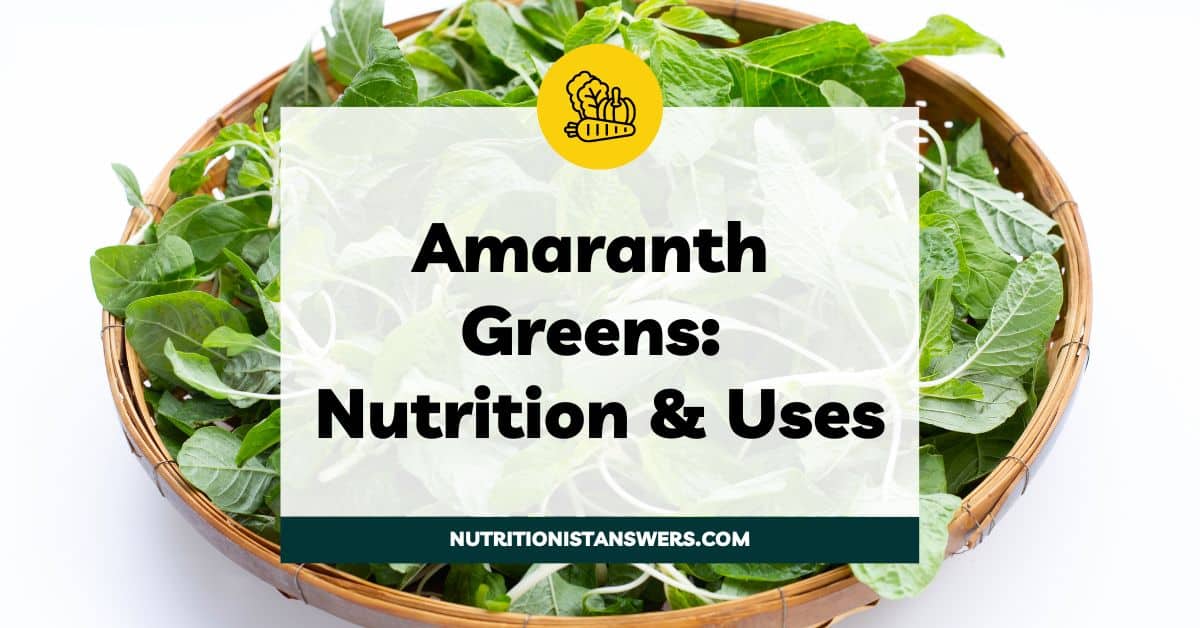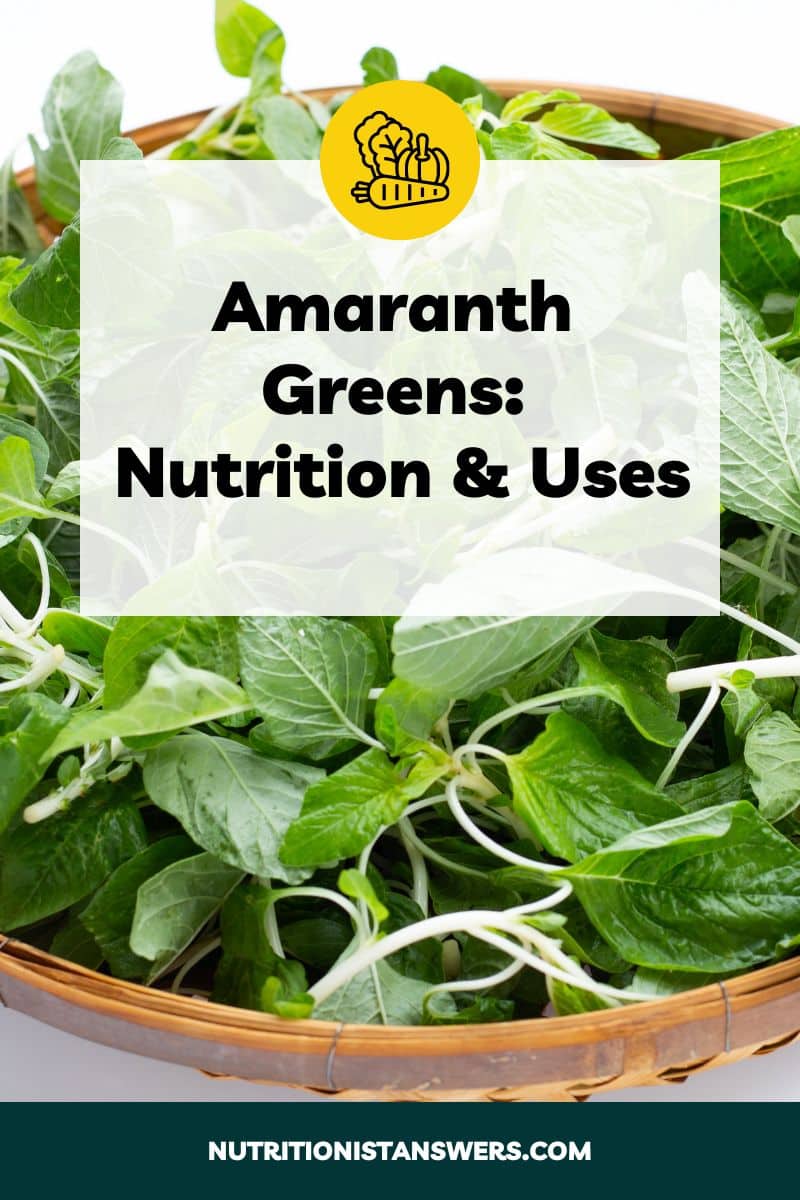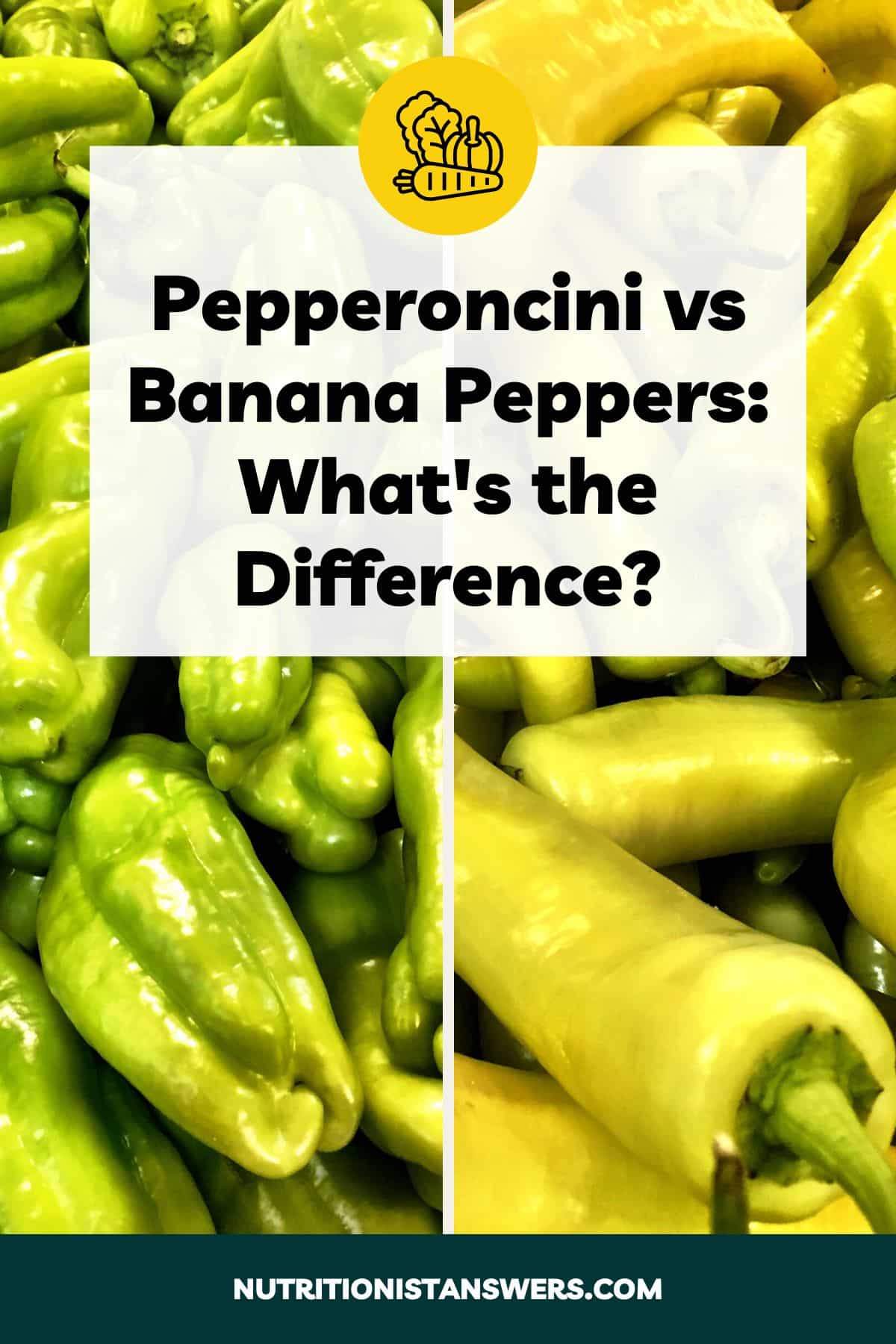Amaranth greens are a hidden gem in the world of leafy greens. They boast an impressive nutritional profile and a wide range of culinary uses.
While amaranth greens may not be as readily available as spinach or kale, their versatile flavor and nutrient content make them worth seeking out.
Learn more about this unique vegetable, including where to find it, its nutritional benefits, and how to cook with it.

Please note that this article contains affiliate links. If you click one of these links and make a purchase, we may earn a commission. As an Amazon Associate, we earn from qualifying purchases.
What are amaranth greens?
Amaranth greens are the leaves of the amaranth plant, a member of the Amaranthaceae family along with spinach, Swiss chard, beets, and quinoa (1, 2).
They are also sometimes called amaranth leaves, callaloo, or Chinese spinach.
The amaranth plant is native to North and Central America, where it was once a staple food for the Mayans and Aztecs. In the 16th century, it spread to other countries and is now grown in hot, humid climates around the world (1).
While amaranth is primarily known for its seeds, which can be boiled and served like a grain, the young leaves (referred to as amaranth greens) are also edible.
Amaranth greens are teardrop-shaped and can either be fully green or mostly green with reddish-purple streaks in the center, depending on the variety.
When raw, amaranth greens taste mild and slightly sweet, similar to spinach. Their flavor becomes stronger and earthier after cooking.
Amaranth greens are popular in Africa, India, and Southeast Asia, where they are used in soups, stews, curries, and stir-fries.
Amaranth greens nutrition
Amaranth greens are low in calories and fat and high in many vitamins and minerals, especially vitamins C and K. They’re also a rich source of antioxidants – even more than spinach!
Here’s a more detailed breakdown of the nutrients found in amaranth greens:
Macronutrients
We’ve included the macronutrient content for both raw and cooked amaranth greens, based on a 1-cup serving size (3, 4):
| Nutrient | Raw amaranth greens (1 cup, 28 grams) | Boiled amaranth greens (1 cup, 132 grams) |
| Calories | 6 | 28 |
| Carbohydrates | 1 gram | 5 grams |
| Protein | 0.7 grams | 3 grams |
| Fat | <0.1 grams | 0.2 grams |
Amaranth greens are very low in calories, offering only 6 calories per raw cup and 28 calories per cooked cup.
With only 1 gram of carbohydrates per cup, raw amaranth greens are a great choice for low-carbohydrate diets, such as the keto diet.
Amaranth greens contain almost no fat and supply a decent amount of protein per serving (3 grams per cooked cup) compared to most other vegetables.
Vitamins and minerals
Here’s the vitamin and mineral content for both raw and cooked amaranth greens, based on a 1-cup serving size (3, 4):
| Nutrient | Raw amaranth greens (1 cup, 28 grams) | Boiled amaranth greens (1 cup, 132 grams) |
| Calcium | 60 mg (5% DV) | 276 mg (21% DV) |
| Iron | 0.7 mg (4% DV) | 3 mg (17% DV) |
| Magnesium | 15 mg (4% DV) | 77 mg (18% DV) |
| Phosphorus | 14 mg (1% DV) | 95 mg (8% DV) |
| Potassium | 171 mg (4% DV) | 846 mg (18% DV) |
| Sodium | 6 mg (<1% DV) | 28 mg (1% DV) |
| Zinc | 0.3 mg (3% DV) | 1.2 mg (11% DV) |
| Copper | 0.05 mg (6% DV) | 0.2 mg (22% DV) |
| Manganese | 0.2 mg (9% DV) | 1.1 mg (48% DV) |
| Selenium | 0.3 mcg (1% DV) | 1.2 mcg (2% DV) |
| Vitamin C | 12 mg (13% DV) | 54 mg (60% DV) |
| Thiamin | 0.01 mg (1% DV) | 0.03 mg (3% DV) |
| Riboflavin | 0.04 mg (3% DV) | 0.2 mg (15% DV) |
| Niacin | 0.2 mg (1% DV) | 0.7 mg (4% DV) |
| Pantothenic acid | 0.02 mg (<1% DV) | 0.08 mg (2% DV) |
| Vitamin B6 | 0.05 mg (3% DV) | 0.2 mg (12% DV) |
| Folate | 24 mcg (6% DV) | 75 mcg (19% DV) |
| Vitamin B12 | 0 mcg (0% DV) | 0 mcg (0% DV) |
| Vitamin A | 41 mcg RAE (5% DV) | 183 mcg RAE (20% DV) |
| Vitamin D | 0 mcg (0% DV) | 0 mcg (0% DV) |
| Vitamin K | 319 mg (266% DV) | Not listed |
As you can see, amaranth greens are an excellent source of vitamin K, providing more than twice the Daily Value (DV) in a single raw cup.
They’re also high in vitamin A, vitamin C, and folate, as well as minerals like manganese, copper, potassium, and magnesium.
Eating your amaranth greens with fat, like olive oil, will help your body absorb more of the vitamins A and K since those vitamins are fat soluble.
Antioxidants
Both green and red amaranth leaves are rich sources of antioxidants, chemicals that protect the body from unstable molecules (called free radicals) that can damage cells (5).
The main antioxidants found in amaranth greens include carotenoids, betalains, betacyanins, betaxanthins, and chlorophyll (6).
Red amaranth is higher in antioxidants that give the leaves their bright purple color, especially betalain, betaxanthin, and betacyanin (7).
Amaranth greens have more than twice the amount of antioxidants than spinach and even more polyphenols (8). So if you love spinach, definitely give this super nutritious vegetable a try.
Interestingly, boiling or frying amaranth greens significantly increases their antioxidant capacity.
This may be due to the ability of heat to destroy the plant’s cell walls, allowing antioxidants to be released and more readily absorbed in the digestive tract (8).
Where to buy amaranth greens
Fresh amaranth leaves can be difficult to find depending on your location, but they are sometimes available for purchase at health food stores, farmers’ markets, and major grocery stores.
You might also be able to find amaranth greens at a local Asian or African market because they are commonly used in traditional dishes for these cuisines.
Another option is to grow your own amaranth plants and harvest the leaves as needed. You can purchase amaranth seeds online.
How to store amaranth greens
You can store fresh amaranth greens in the fridge for about a week or blanch and freeze them for even longer storage.
In the refrigerator
To keep amaranth greens fresh for as long as possible, store them in the refrigerator without washing first.
(Washing leafy greens before storing them can increase bacterial growth and cause them to rot faster, even in the fridge.)
Wrap the greens in a paper towel to help absorb any excess moisture and then place them inside a bag to protect them from cold temperatures.
If stored properly, fresh amaranth green should stay fresh for at least one week.
In the freezer
For long-term storage, consider freezing amaranth greens.
To freeze amaranth greens, first, blanch them by submerging the leaves in boiling water for one minute. Then, drain them and store them in a ziploc bag or other airtight container in the freezer.
They should last this way for several months.
Keep in mind that blanching deactivates enzymes that can cause vegetables to lose some of their flavor, color, and texture over time, even in the freezer (9).
We don’t recommend freezing raw amaranth greens since the leaves will wilt and become mushy when defrosted.
Ways to use amaranth greens
1. As a side dish
Amaranth greens are delicious when served as a side dish alongside a meat, fish, or vegetarian main course.
Try stir-frying amaranth greens in hot oil along with aromatics like fresh garlic. Add a splash of sugar and sesame oil towards the end of cooking for a delicious crowd-pleasing side dish.
If you’d like to temper the bitterness of the amaranth greens, you can quickly blanch them in boiling water until tender and then toss them with warm garlic oil and season simply with salt.
No matter which cooking method you choose, keep a close eye on the amaranth greens to make sure they don’t end up overcooked and mushy.
2. In salads
Amaranth greens are a fun addition to salads. The tender greens have a slightly sweet and slightly earthy flavor that pairs well with a variety of other ingredients.
For a simple salad, try tossing the greens with some cherry tomatoes, sliced cucumbers, and a light vinaigrette. Or, add some fresh fruit like sliced peaches or pears for a sweet and refreshing twist.
For a more filling salad, mix the greens with cooked quinoa or brown rice, grilled chicken or tofu, and some avocado or olives for healthy fats. You can also add some crunch with toasted nuts or seeds like almonds or sunflower seeds.
3. In soups, stews, & curries
Amaranth greens are a versatile ingredient that can be used in soups, stews, and curries to add a nutritious boost of flavor.
They are used in many traditional dishes in Africa, India, and southeast Asia, including Thotakura Pappu (Indian amaranth dal), Efo Riro (Nigerian stewed greens), and Canh Rau Den (Vietnamese amaranth soup).
In African cuisine, amaranth greens are often mixed with other leafy greens like spinach or kale to make traditional stews and soups.
In Vietnamese cuisine, they are added to soups like Canh Chua and Pho for some extra texture and nutrition.
4. As a substitute for other leafy greens
Amaranth greens can be an excellent substitute for other leafy greens in various recipes, offering a mild and versatile flavor along with added nutrition.
For example, they can be swapped out for spinach or other greens in dips, soups, lasagnas, casseroles, and egg-based dishes like frittatas and omelets.
Generally, amaranth greens are a better substitute for dark leafy greens such as spinach and chard rather than lighter, crisper greens like romaine and iceberg lettuce.
Final thoughts
Amaranth greens are delicious leafy green vegetables with a mild, slightly sweet, and earthy flavor, similar to spinach.
They’re low in calories and carbohydrates and packed with vitamins, minerals, and antioxidants. Just a single cup of raw amaranth greens provides more than twice the Daily Value for vitamin K.
Amaranth greens can be used in a variety of dishes, from simple salads and side dishes to soups, stews, curries, and egg-based dishes. They also make a great substitute for spinach and other dark leafy greens.
Although amaranth greens can be difficult to find in some areas, they are worth seeking out for their versatile flavor and impressive nutritional value. Give them a try if you haven’t already!
Amy Richter is a Registered Dietitian Nutritionist based in Missouri. She is an experienced nutrition writer and medical advisor for Healthline and Medical News Today. Amy is passionate about all things food-related and enjoys translating complex science into easy-to-understand articles.





